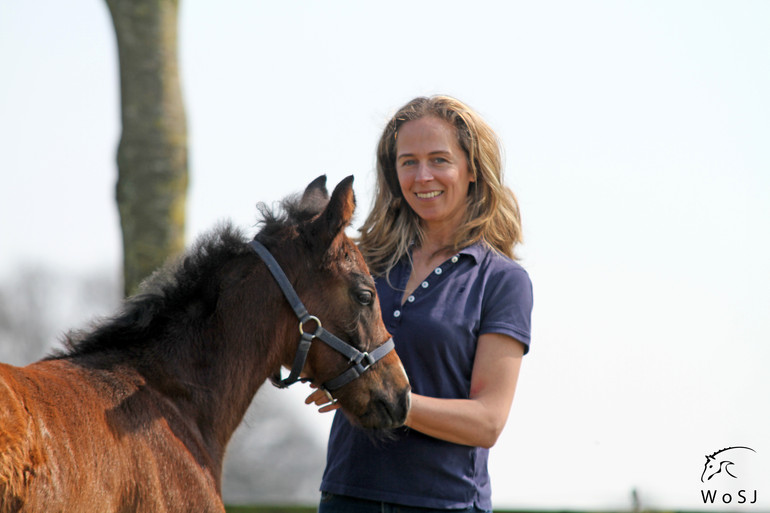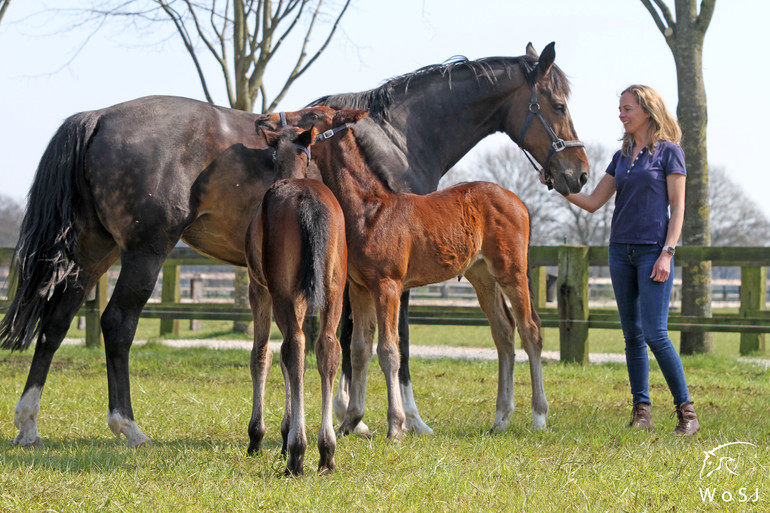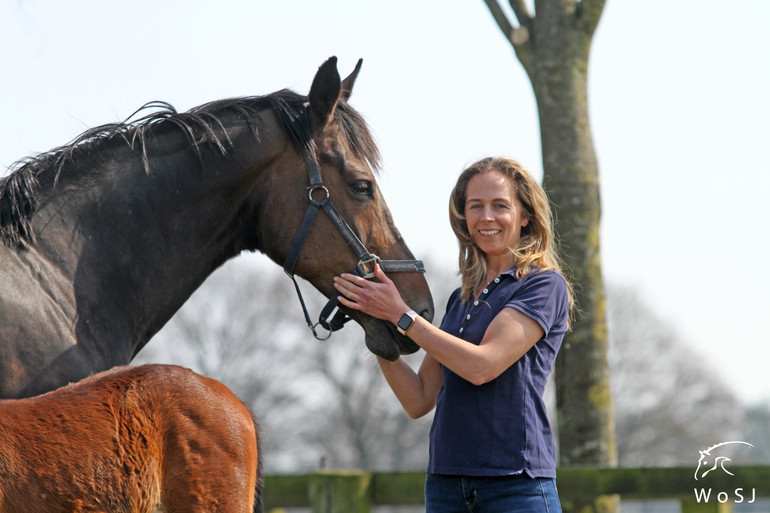Text © World of Showjumping
Lies De Backer is a Belgian veterinarian specialized in equine reproduction. World of Showjumping sat down with De Backer to learn more about how horse breeding is changing, as well as the pros and cons of different reproductive methods.
“It is a way of life, a passion,” De Backer smiles when talking about her job. “It makes me happy to see an embryo, to see good quality of semen under the microscope… Every time a foal is born, it is a gift from nature and being a part of this process from insemination to birth is unique.”
“However, the breeding of horses has changed a lot in the last few years,” De Backer continues. “Many investors have bought exceptional, expensive broodmares and use the OPU (Ovum Pick Up)/ICSI (Intracytoplasmic Sperm Injection) technic to produce foals. The sale of these embryos and foals on auctions has become a big business. Nowadays, it seems like the breeders who cover their mare with a stallion from the closest stud farm are slowly disappearing and get replaced by more business minded breeders.”
When it comes to choosing a reproductive method, embryo transfer and OPU/ICSI have become more and more popular among breeders. Before making a choice for the mare, De Backer highlights the importance of correct information. “I think that before you decide, you should discuss the possibilities, the expectations as well as the potential risks and the costs with your veterinarian,” De Backer says before she goes on to explain the pros and cons of the two methods.
Embryo transfer (ET)
“The reasons to choose for embryo transfer are that the mare can have more than one offspring per year and parallel to that she can keep on training and even competing. Also, you avoid the risks of pregnancy and birth for the sport mare,” De Backer begins.
When doing embryo transfer, the cycles of both the donor and the recipient mare have to be monitored. “The donor mare should be checked regularly in order to determine the right time of insemination and subsequently the time of flushing, which is approximately eight days after ovulation. When you collect an embryo, it should be transplanted immediately into the uterus of the recipient mare that has the closest cycle to the donor. As it is not so easy to synchronize the cycles, a large group of recipient mares is needed.”
“It is a huge job to follow the cycles of all the recipient mares during the season,” De Backer explains. “You have to know their exact time of ovulation, as it determines the success of the transfer.”
Whether embryo transfer has an influence on the behavior or mental health of the donor mare is something De Backer has a clear opinion on. “Firstly, the technique in itself is harmless for mares,” she begins. “We do not see any side-effects of the flushing, provided that it is done ‘lege artis’. In most cases, sedation is not needed. The potential risks of the rectal exam and insemination are the same as for mares that carry the foal themselves. Often the donor mare gets a hormone injection to come back in heat quickly after the flushing, but this is not a necessity. I think the problems that some people link with embryo transfer rather have to do with compromised management,” she says.
“I believe that if you want to breed, deciding between embryo transfer and OPU/ICSI should include the seasonal planning of your mare,” she continues. “Nowadays the competition schedule is so intensive that for the welfare of the horse I normally advise to give them a few weeks competition rest during the period of embryo transfer, rather than sacrificing their necessary rest days between competitions with rectal examinations or extra transports.”
And when it comes to success rates? “The chance to flush an embryo is comparable to the chance to get a pregnancy at 14 days after artificial insemination. In both cases the success rate depends on the fertility of the mare and the stallion. In general, fresh semen is more fertile than frozen. Once you get an embryo, the chance for a pregnant recipient is about 75-80%.”
OPU and ICSI
A more recent technology in equine reproduction is the Ovum Pick Up (OPU), which consists in the collection of (immature) oocytes from donor mares, their in vitro maturation and fertilization by direct injection of the sperm (intracytoplasmic sperm injection, ICSI) followed by culture of the fertilized oocytes in an incubator for about a week, until they reach the stage of embryos suitable for transfer in recipient mares. Consequently, even with OPU/ICSI you still need to carry out an embryo transfer.
“An advantage of this technique is that a very low dose of semen can be used to fertilize multiple oocytes,” De Backer tells. “This makes it very interesting when using semen that has limited availability or poor fertility when used for artificial insemination. Another advantage of OPU/ICSI is that the breeder is not dependent on the seasonal cycle of the mare. It can be carried out all year-round, although the transition period – spring and autumn – is preferred,” De Backer explains. “As most of the embryos produced with OPU/ICSI are frozen, it gives the breeder the possibility to better plan the breeding season,” she continues. “For example, if you transfer the embryos in May, all the foals will be born the next year in April. Another advantage to work with frozen embryos, is that there is no need for a large group of recipients, because the embryo is kept in the nitrogen until the (one) recipient is at the right moment of the cycle to transfer the embryo."
“Compared to the flushing of a fresh embryo, OPU is more invasive for the donor mare with more risks for complications, such as colic and internal bleeding. When it comes to the results of OPU/ICSI, there are big individual differences between mares, which means that about 45% of the mares give no embryo, while about 55% of the mares give one or more embryos. Consequently, the average is around 1 embryo per OPU/ICSI session. ICSI embryos are frozen and should still be transferred into a recipient mare, with an average success of 60-65%, which is lower than with fresh embryos. Unfortunately, there is a higher pregnancy loss (embryonic death) after transfer of frozen ICSI embryos compared to fresh embryos. On the other hand, this rather new technic is still in full development, and I expect the success rates to improve during the coming years."
“The costs for OPU and ICSI are still high and a lot of research needs to be done,” De Backer points out. “One of the issues I personally wonder about is the influence of the absence of natural selection, for both oocyte and spermatocyte. The whole OPU/ICSI story is a very interesting topic, that is used more and more among breeders, which gives the specialists in this technic many opportunities to improve the results in all phases of this process.”
No reproduction without written permission, copyright © World of Showjumping











